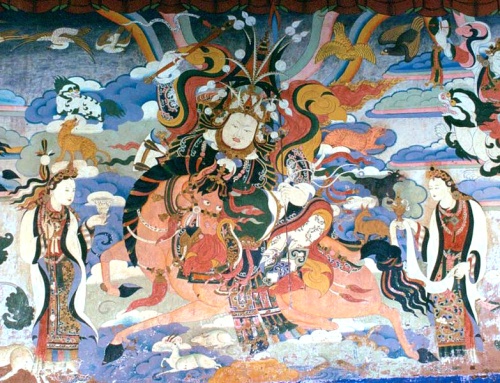The inscription Dum vixi tacui, mortua dulce cano on an early 18th-century Italian spinet in Edinburgh is identifiable with the second line of a riddling couplet found in Nikolaus von Reusner’s Aenigmatographia (1599). The literary ancestry of Reusner’s couplet is traceable to a traditional Greek riddle about the tortoise-lyre, where the tortoise becomes vocal only after its death.
Many examples from classical authors and imitators in later European literature and popular tradition can be found. The motif was transferred to instruments made of wood, and Reusner’s couplet was much used as a motto on early violins; the famous luthier Gasparo Duiffopruggar particularly appears to have been associated with it.
This according to “The riddle of the tortoise and the lyre” by Edward Kerr Borthwick (Music & letters LI/4 [October 1970] pp. 373–87).
Above, a harpsichord in the Flemish style that includes the inscription; below, an instrumental work inspired by the original four-line poem.













